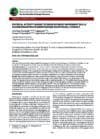Abstract
The lack of physical activity that is applied in Kindergarten (PAUD) has a bad impact on the future of children. It was revealed that the designed curriculum was more dominant in the development of academic achievement. The study purpose was to develop basic movement skills in kindergarten students based on physical literacy.
Materials and methods
The method used in this study was research and development methods using quantitative and qualitative settings. With a population of all kindergarten teachers in Cilacap Regency which amounted to 1,387 teachers from 350 kindergartens, the sample used was 52 teachers who were taken by proportional sampling. The data analysis technique used in his study was descriptive quantitative data analysis techniques with percentages.
Results
The research findings show that each item of the statement of physical activity variables in developing students’ basic movements can be seen from the average value of 4.205 which is in the very good category scale range. The statement that has the smallest average value in statement number 2 is “Do students have enough physical activity at school?” and has a value of 3.827 with a good category. While the highest average in statement number 1 is “Are Kindergarten students’ physical activities held at school?” with an average value of 4.423 very good category.
Conclusions
Therefore, it can be concluded that “kindergarten students’ physical activities held in schools” give a very good impression and are beneficial for kindergarten (PAUD) children for their growth and development.



Responses